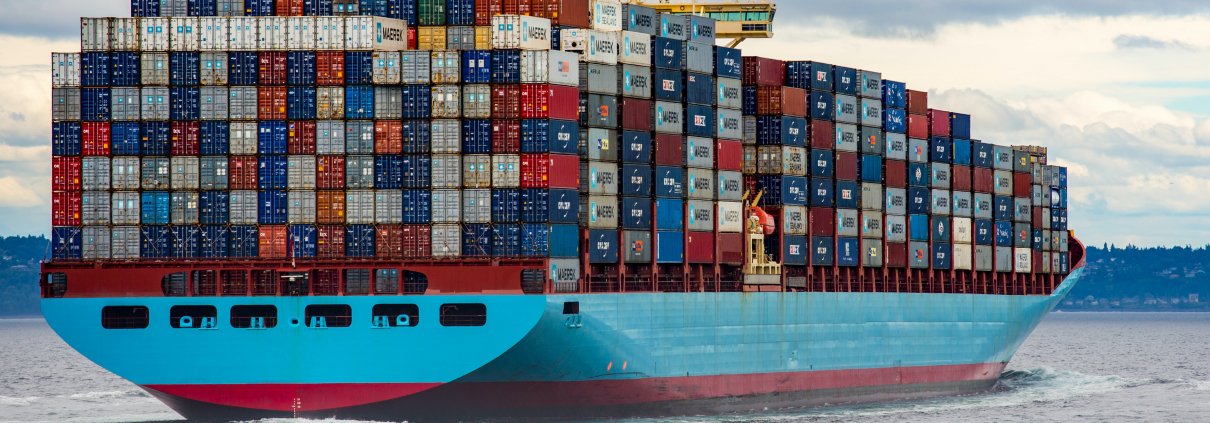Multi Stage Python
When shipping applications using containers, one often is confronted with overly large final images. Multi-stage builds are a common way to circumvent this issue, especially for compiled languages like Go or Java. In our latest blog post we show how to utilise multi-stage builds for python images to bring down image sizes and thereby improving security.
Using docker multi-stage builds to reduce image size
When writing container images, it is always preferable to have smaller images and to only include what is really needed. This has two main advantages:
- images take up less storage space
- security vulnerabilities of software that is not installed cannot be exploited
Example dockerfile
Let's take a very simple image that starts off with an official python-docker image, using a slim version of the current stable debian release, bullseye. We are going to use python 3.8, but this is not important. The image is pulled from docker hub.
The dockerfiles are provided in this repository in the docker directory and can be built using './bin/build.sh' on Linux.
Reducing the image size
The all-in-one solution
We are simply going to `COPY` over a `requirements.txt` and install it using `pip`, as this is a fairly common use case. I have chosen to install pyodbc since it has some system
dependencies that have to be installed.
Note: The dockerfiles are a minimal reproducible example and do not follow some common best practices!
```dockerfile
FROM python:3.8-slim-bullseye
RUN apt-get update && \
apt-get install -y gcc g++ unixodbc-dev
COPY requirements.txt /tmp/requirements.txt
RUN pip3 install --no-cache-dir -r /tmp/requirements.txt
```After building the image, we get an image size of 422MB:
```bash
$ docker images original
REPOSITORY TAG IMAGE ID CREATED SIZE
original latest 09ec99a1bafa About a minute ago 422MB
```Introducing: multi-stage
Multi-stage builds are a neat way to keep build dependencies from blowing up the size of your final image. I am not going to go into detail on how they work.
I am going to create wheels. From the pip documentation:
"Wheel is a built-package format, and offers the advantage of not recompiling your software during every install."
And this is exactly what we want. Compile it and then reuse it without compilation.
The original dockerfile is split in 2: the builder image will install the build dependencies and create the wheels. The final image will install the packages from the wheels without the need to install any build tools:
the wheels. The final image will install the packages from the wheels without the need to install any
```dockerfile
ARG WHEEL_DIST="/tmp/wheels"
FROM python:3.8-slim-bullseye as builder
ARG WHEEL_DIST
RUN apt-get update && \
apt-get install -y gcc g++ unixodbc-dev
COPY requirements.txt /tmp/requirements.txt
RUN python3 -m pip wheel -w "${WHEEL_DIST}" -r /tmp/requirements.txt
FROM python:3.8-slim-bullseye
ARG WHEEL_DIST
COPY --from=builder "${WHEEL_DIST}" "${WHEEL_DIST}"
WORKDIR "${WHEEL_DIST}"
RUN pip3 --no-cache-dir install *.whl
``` The size of the image has gone down significantly:
```bash
$ docker images multi-stage
REPOSITORY TAG IMAGE ID CREATED SIZE
multi-stage latest b90d97997b3b 44 seconds ago 128MB
```The difference is starker when considering the size of the base image:
```bash
docker images python:3.8-slim-bullseye
REPOSITORY TAG IMAGE ID CREATED SIZE
python 3.8-slim-bullseye caf584a25606 5 days ago 122MB
```Increasing security
Smaller images can contribute to more security.
To illustrate this point, we are going to use trivy to scan our images for known security vulnerabilities.
The base image has 85 vulnerabilities:
- LOW: 12
- MEDIUM: 35
- HIGH: 30
- CRITICAL: 8
The original image that includes the build tools has 331 total vulnerabilities:
- UNKNOWN: 2
- LOW: 24
- MEDIUM: 175
- HIGH: 109
- CRITICAL: 21
The multi-stage image again has 85 images that it "inherits" from the base image, but does not introduce any new ones.
Summary
When using python, do utilise wheels and multi-stage builds to decrease the image size and increase the security of your deployements.



